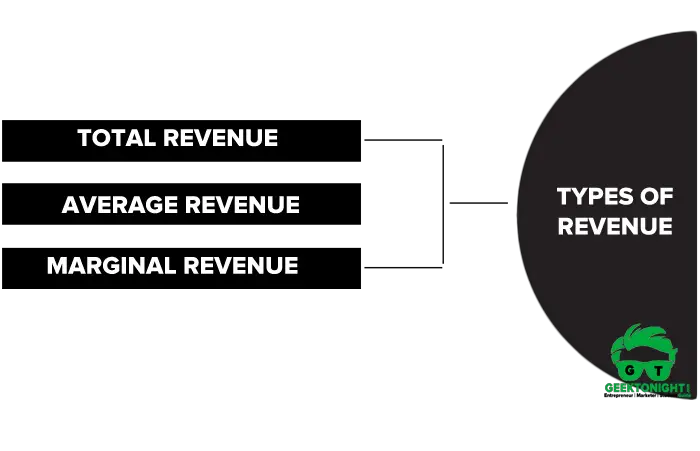What is Revenue?
Revenue is the total amount of money received by an organisation in return of the goods sold or services provided during a given time period.
Table of Content
In other words, revenue of a firm refers to the amount received by the firm from the sale of a given quantity of a commodity in the market.
For example, if a firm obtains 2, 50,000 from the sale of 10 computers, the received amount of 2, 50,000 is its revenue earned during the time period.
Also Read: Production in Economics
Types of Revenue
What is Revenue Types? There are mainly three types of revenue:

Total Revenue
Total Revenue (TR) of a firm refers to total receipts from the sale of a given quantity of a commodity. In other words, total revenue is the total income of a firm. Total revenue is calculated by multiplying the quantity of the commodity sold with the price of the commodity.
Formula: Total Revenue = Quantity × Price
Total Revenue Example
For example, if a firm sells 10 fans at a price of ₹ 2,000 per fan, then the total revenue would be calculated as follows: 10 fans × ₹ 2,000 = ₹ 20, 000
Average Revenue
Average Revenue (AR) of a firm refers to the revenue earned per unit of output sold. It is calculated by dividing the total revenue of the firm by the total number of units sold.
Formula: Average Revenue = Total revenue / Total number of unit sold
Average Revenue Example
For example, if total revenue from the sale of 10 fans at the rate of 2000 per fan is ₹ 20, 000, then:
Average Revenue = 20000 / 10 = ₹ 2,000
Here, it is important to note that AR and price of a commodity are equal in value. This can be explained as follows
TR = Quantity × Price……………………..(1)
AR = TR / Q ………………………………………….(2)
Substituting the value of TR from equation (1) in equation (2),
AR = Quantity Price / Quantity
Therefore, AR = Price
Marginal Revenue
Marginal Revenue (MR) of a firm refers to the revenue earned by selling an additional unit of the commodity. In other words, the change in total revenue resulting from the sale of an additional unit is called marginal revenue.
MRn = TRn – TRn-1
Where MRn = marginal revenue of nth unit (additional unit), TRn = total revenue from n units, TRn-1 = Total revenue from (n – 1) units and n = number of units sold.
Marginal Revenue Example
if the total revenue realised from the sale of 10 fans is 2,000 and that from sale of 11 fans is ₹ 2,500, then MR of the 11th fan will be calculated as follows:
MR11 = TR11 – TR10
MR11 = ₹ 2,500 – ₹ 2,000 = ₹ 500
Also Read: Types of Cost
Business Economics Tutorial
(Click on Topic to Read)
Go On, Share article with Friends
Did we miss something in Business Economics Tutorial? Come on! Tell us what you think about our article on What is Revenue? | Business Economics in the comments section.
Business Economics Tutorial
(Click on Topic to Read)










